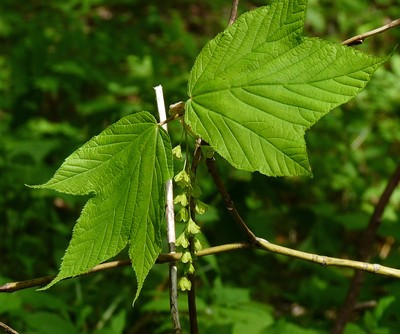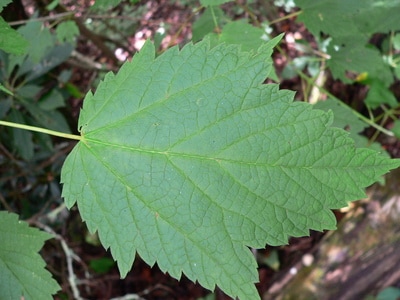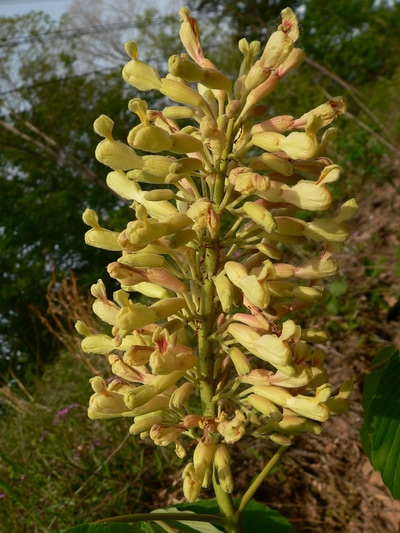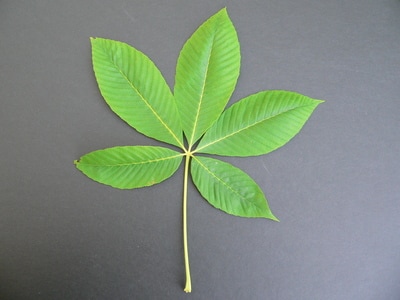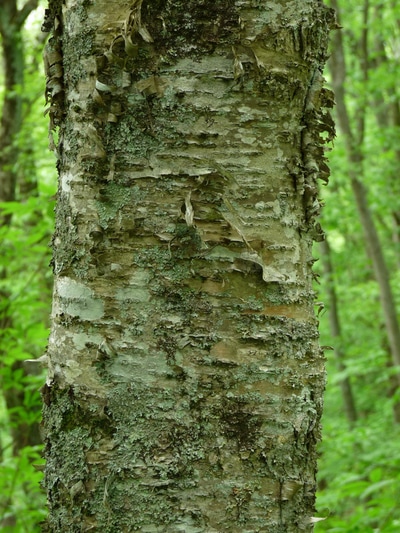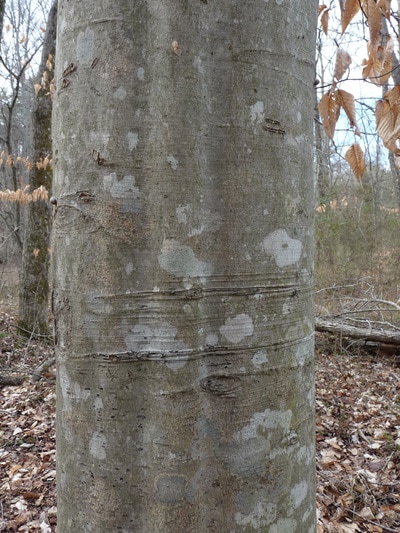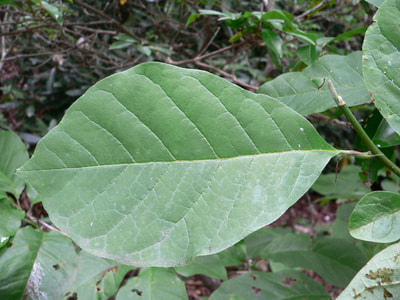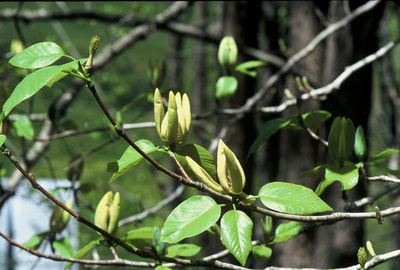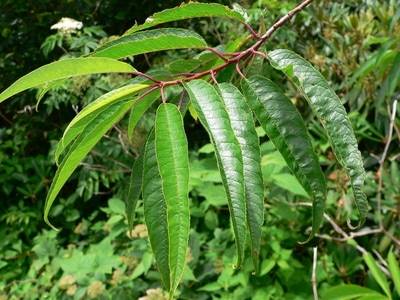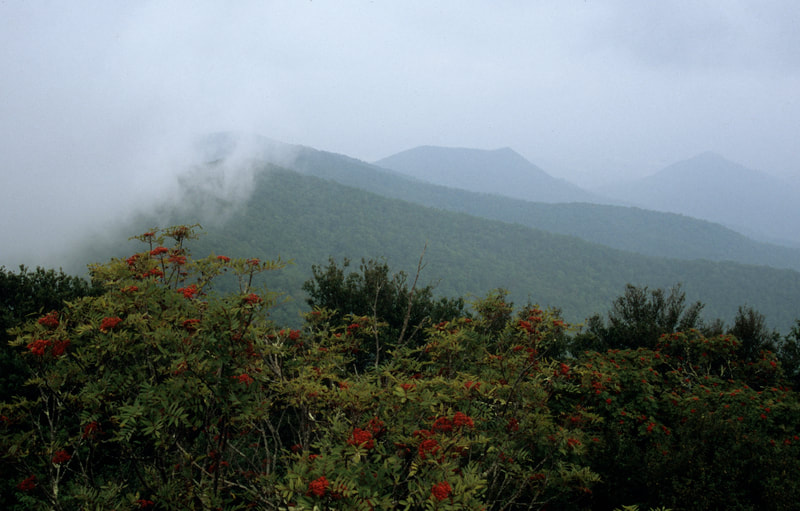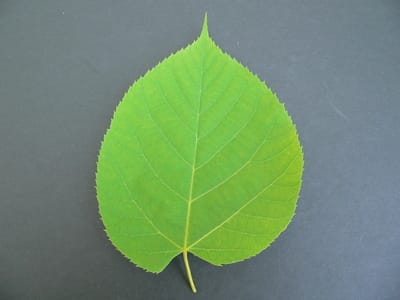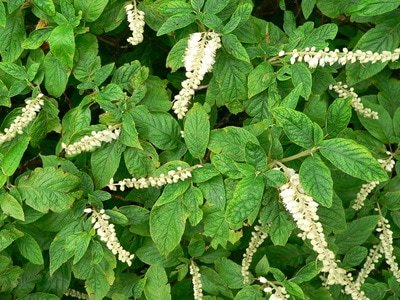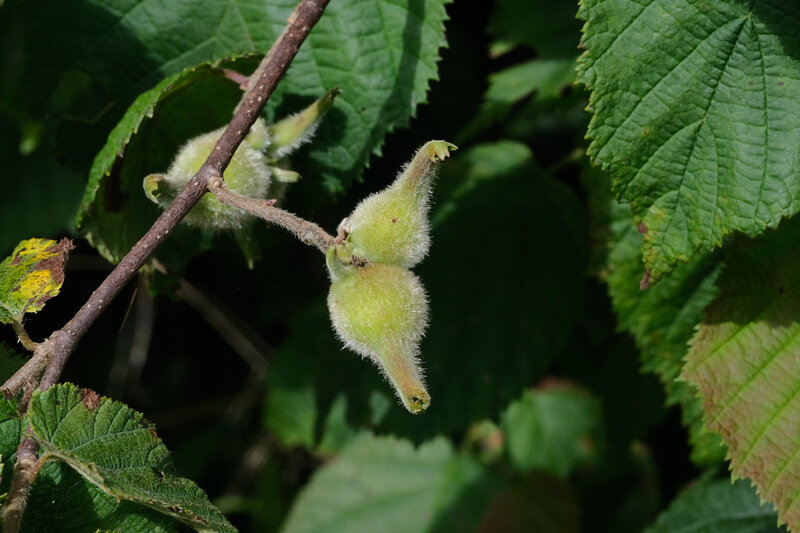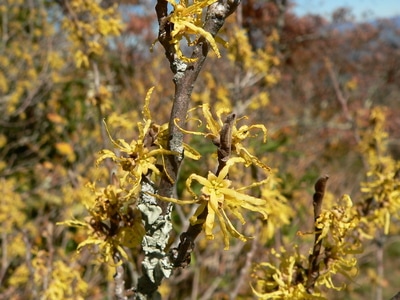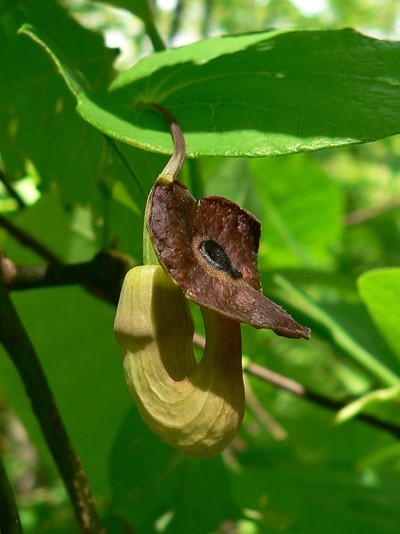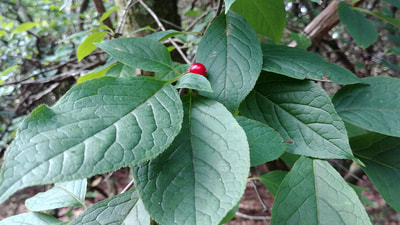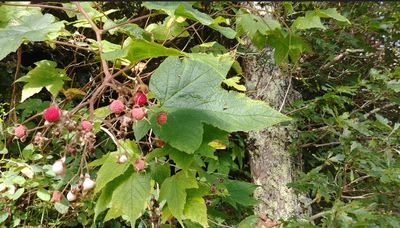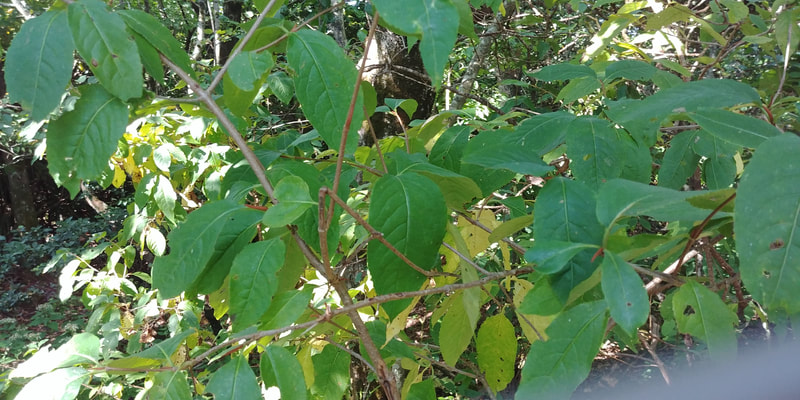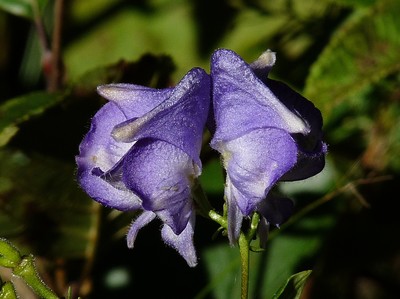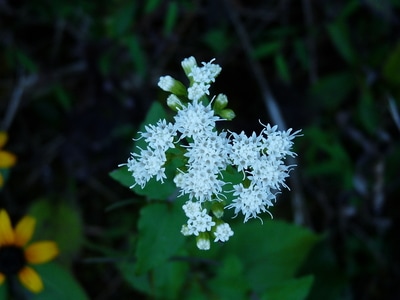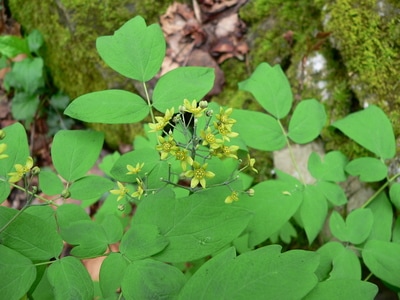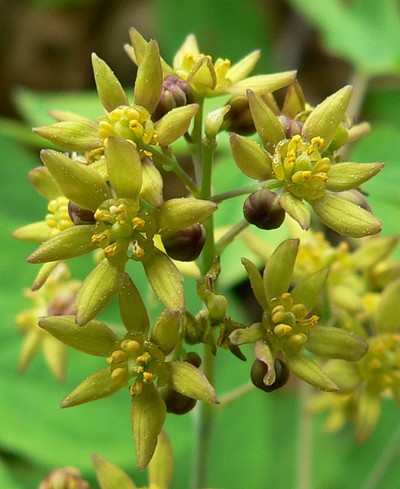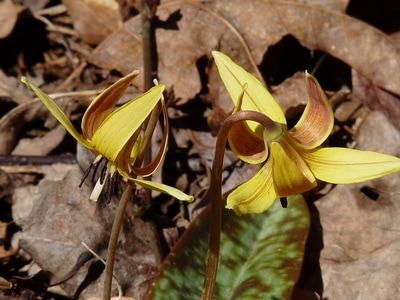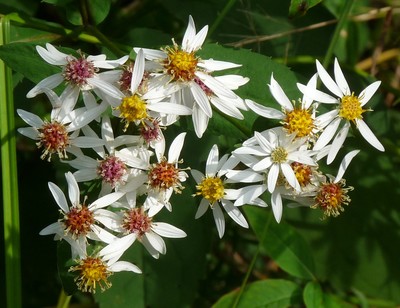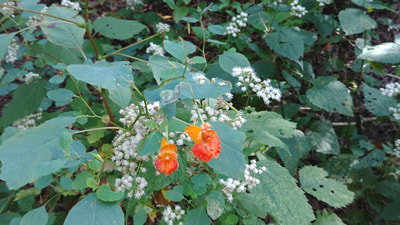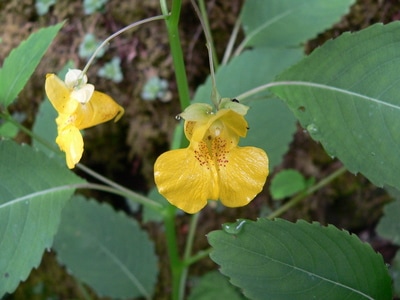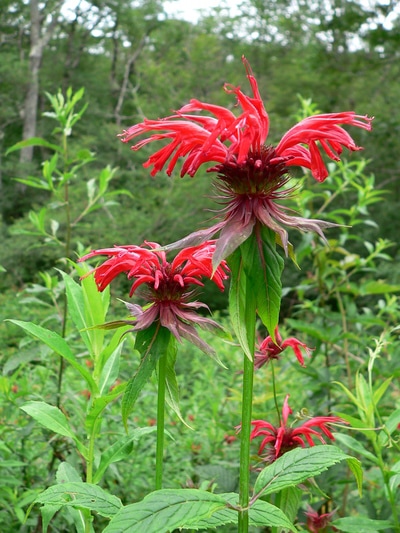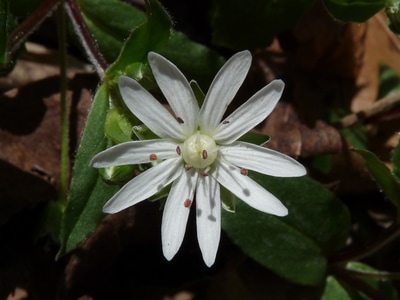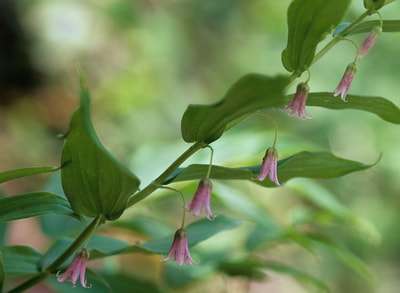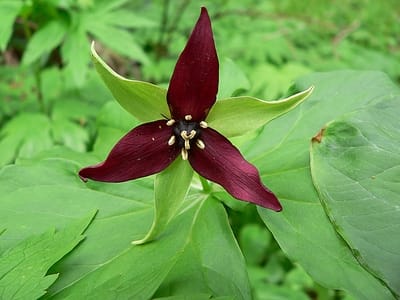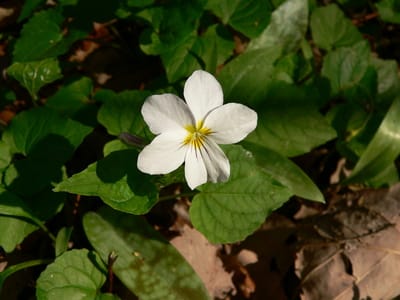Northern Hardwoods and Boulderfield Forests
|
Northern hardwood and boulderfield forests are cool, moist forests that grow on north facing slopes over 3,500 feet. They have a temperate rain forest feel, and are often ensconced in clouds, with lichens draping many trees. Many of the plants are much more common farther north, but unusual in lower elevations in Georgia. The short growing season, thin soils, and high winds cause trees to be stunted. Boulderfields are areas of tightly packed boulders within the northern hardwoods that are lushly covered with moss and vines, often with seepage among the rocks. Lower-elevation rocky slopes that do not have moss mats or high-elevation species are not considered boulderfields; usually they are talus.
Indicator species: Yellow birch, striped maple, mountain maple, fire cherry, mountain-ash What's special: These forests are the coolest and moistest in the state, with a diversity of plants and animals that are at their southernmost range here: they are more common much farther north, and rare to Georgia. Some species here are relicts from the Pleistocene, when temperatures were much cooler than they are today. Related communities: Grades into Montane Oak forests in west and south facing aspects at the same elevation. Grades into Fertile or Acidic Mesic (Cove) Forests downslope. Seepage wetland communities are often embedded. |
Landscapes
Birds
|
|
Plants Click on a plant name to see images. Plant names are in order by scientific name. Trees Striped maple Acer pensylvanicum Sugar maple Acer saccharum Mountain maple Acer spicatum Yellow buckeye Aesculus flava Yellow birch Betula alleghaniensis American (Gray) beech Fagus grandifolia Cucumber magnolia Magnolia acuminata Fire or pin cherry Prunus pensylvanica Mountain-ash Sorbus americana White basswood Tilia americana var. heterophylla Shrubs and Woody Vines Northern leatherflower Clematis viorna Mountain sweet pepperbush Clethra acuminata Beaked hazelnut Corylus cornuta Running strawberry-bush Euonymus obovatus Witch-hazel Hamamelis virginiana Mountain holly Ilex montana Dutchman's pipe Isotrema macrophyllum Witch-hazel Hamamelis virginiana Prickly gooseberry Ribes cynosbati Allegheny blackberry Rubus allegheniensis Purple-flowering raspberry Rubus odoratus Northern wild raisin/Withe-rod Viburnum cassinoides Ground Cover Wildflowers Monkshood Aconitum uncinatum White snakeroot/Milk-sick Ageratina altissima Mountain angelica Angelica triquinata Blue cohosh Caulophyllum thalictroides Spring beauty Claytonia caroliniana Northern horsebalm Collinsonia canadensis Dimpled trout lily Erythronium umbilicatum Blue Ridge white heart-leaved aster Eurybia chlorolepis Common white heart-leaved aster Eurybia divaricata Orange jewelweed Impatiens capensis Yellow jewelweed Impatiens pallida Wood-nettle Laportea canadensis Canada mayflower Maianthemum canadense Bee-balm Monarda didyma Whorled aster Oclemena acuminata Star chickweed Stellaria pubera Red trillium Trillium erectum Tall white violet Viola canadensis Ferns Hay-scented fern Dennstaedtia punctilobula Fancy fern Dryopteris intermedia |
Representative trees in order by scientific nameRepresentative shrubs and woody vines in order by scientific nameRepresentative ground layer in order by scientific name |

